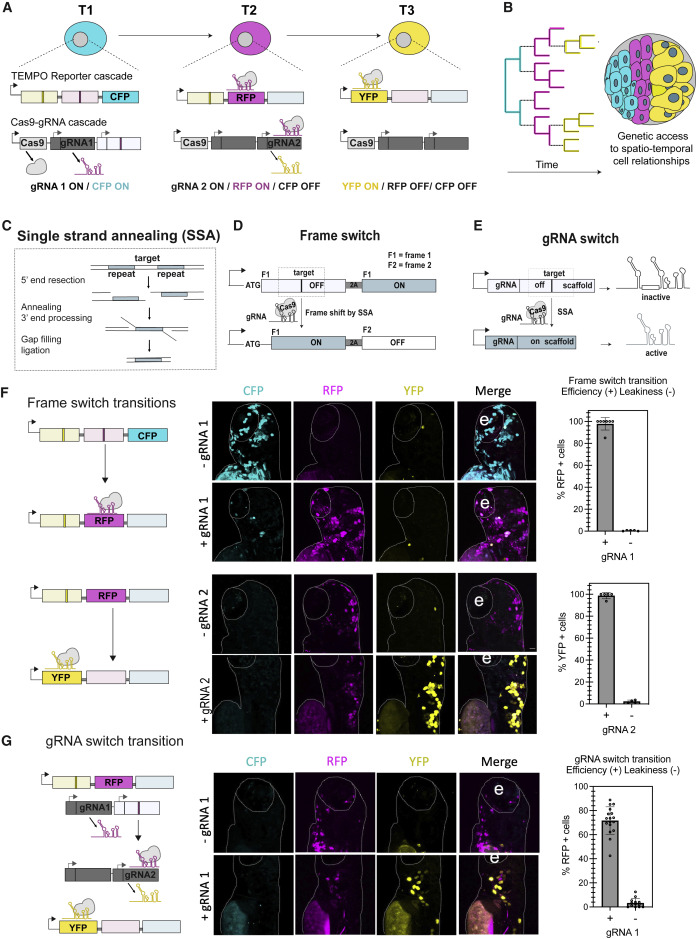Fig. 1 TEMPO design and implementation
(A) Two TEMPO transgenes enable sequential activation of three reporters (CFP-RFP-YFP, T, temporal windows) by a conditional gRNA cascade. gRNAs and their corresponding targets are color coded.
(B) TEMPO allows genetic access and simultaneous visualization of sequentially produced cells in their anatomical context. Dashed lines represent an undefined number of cell divisions.
(C) Representation of the repair mechanism, single-strand annealing (SSA), required to activate frame and gRNA switches (D and E).
(D) Frame switch design: Activation of a reporter (OFF—ON, F1, frame 1) after a double strand break (DSB) by CRISPR-Cas9 followed by SSA causes a frame shift, inactivating the downstream reporter (OFF, F2, frame 2).
(E) A conditional gRNA activated by another gRNA through SSA repair.
(F) Frame switch transitions assessed by expression of fluorescent reporters in 3 days post-fertilization (dpf) zebrafish larvae. Plots indicate mean ± SEM of reporter fluorescence activated in the presence (+) or absence (–) of the gRNA, representing efficiency or leakiness of the transition, respectively (n = 21 fish, at least 4 independent experiments/condition).
(G) A gRNA switch fluorescent assay enables characterization of the conditional gRNA-2 switch efficiency (+) and leakiness (–) in the presence or absence of gRNA-1, respectively (n = 13–17 fish/condition, 4 independent experiments). E, eye.

